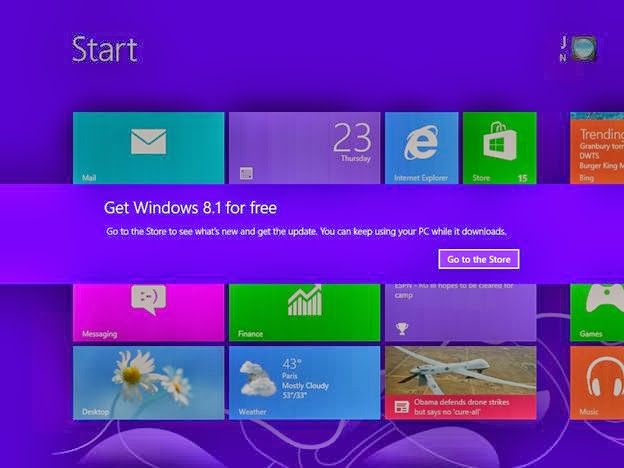Windows 8.1 is the next step forward to Windows 8. It supports the widest possible range of devices, from the smallest tablets and convertibles to the sleekest and highest-powered notebooks, all delivering the latest advances in screens, battery life, performance, and design.
The Windows 8.1 update changes key aspects of the Windows 8 operating system. The update contains a number of improvements throughout the operating system, but primarily focuses on improving functionality within the new Windows UI shell and Windows Store apps, expanding search capabilities, adding support for more emerging technologies, and features intended to improve the usability of the desktop interface following the changes that were made to it on Windows 8 (such as restoring a visible Start button, the ability to disable hot corners, and the ability to skip the Start screen when logging in).
The Windows 8.1 minimum requirements are the same as Windows 8:
Hardware
|
Requirement
|
| Processor | 1 gigahertz (GHz) or faster with PAE, NX and SSE2 support. |
| CPU Support | Must support PAE, NX, and SSE2 |
| RAM | 1 gigabyte (GB) (32-bit) or 2 GB (64-bit) |
| Hard disk space | 16 GB (32-bit) or 20 GB (64-bit) |
| Graphics card | Microsoft DirectX® 9 graphics device with WDDM driver |
Additional requirements to use certain features:
- For 64-bit installations of Windows 8.1 Preview, your CPU must also support CMPXCHG16b, PrefetchW and LAHF/SAHF.
- To use touch, you need a tablet or a monitor that supports multi touch.
- To access the Windows Store and to download and run apps, you need an active Internet connection, a screen resolution of at least 1024 x 768, and a Microsoft account.
- Internet access (ISP fees might apply).
Windows 8 system requirements
Sharing Master Keyboard Shortcuts Windows 8
